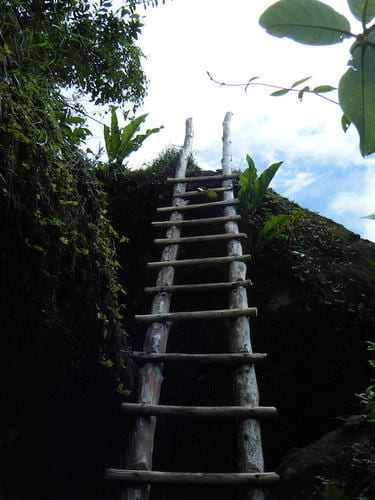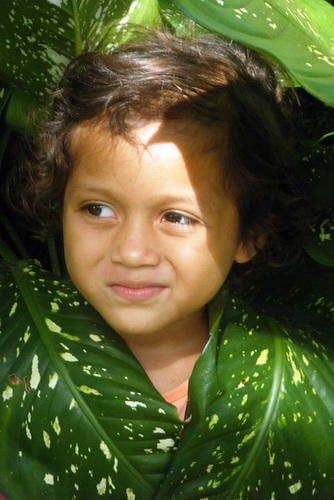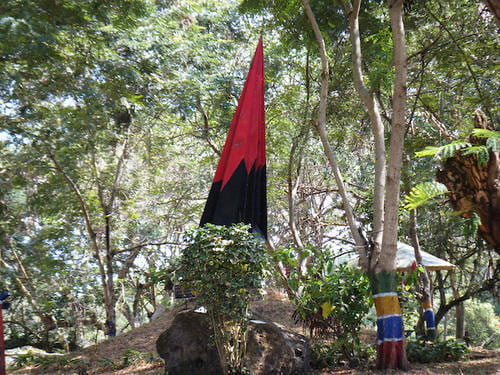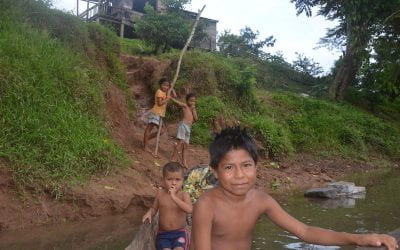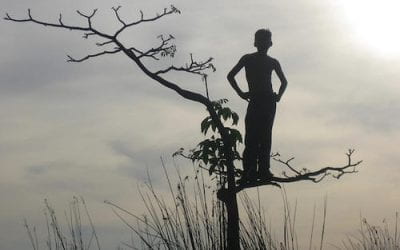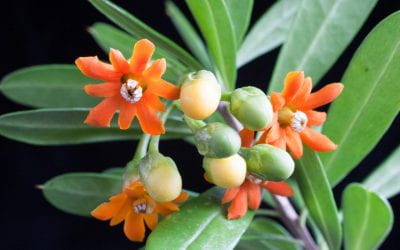Here Nicaragua, change…
Ernesto Cardenal is the greatest of Nicaragua’s living poets. Born in 1925, and still active (in 2018, he published a long poem as a book), none of his fellow countrymen and women can match his creative longevity, and indeed there are those who would consider him, to the disappointment of his colleague Fernando Silva (1927-2016), the most Nicaraguan of Nicaraguans and even the most lively of the living. Above all, Cardenal is the Nicaraguan who has most influenced the language shared by 500 million people. Perhaps, after him, although we wish to avoid Olympic-style rankings, we could name Gioconda Belli (1948).
“Influence on the language.” That’s a huge hyperbole. But we see that fact quickly in the river that sweeps our days: the market and its domestic oracle, Google. The world’s most prestigious publishing houses of poetry in Spanish is Visor, which distributes its books on both sides of the Atlantic. In its catalogue, we find five living Nicaraguan poets: Cardenal and Belli, with six books each, and Francisco de Asís Fernández (1945), Daisy Zamora (1950) and Carlos Fonseca Grigsby (1988), with one each; although if we check out the websites of the most iconic Mexican bookstores—one of the countries that most imports books from Spain, where Visor is located—we only find Cardenal and Belli in all of them (El Sótano, Gandhi, Péndulo, Porrúa), while Zamora with La violenta espuma, 2017 is only found in Gandhi and Péndulo; Fernández, with titles published elsewhere (Mexico, La Otra: Luna mojada, 2015, and Spain, Alfar: La traición de los sueños, 2015, in PDF) is only found in El Sótano; Fonseca Grigsby’s only published work Una oscuridad brillando en la claridad que la claridad no logra comprender, 2008 can’t be found, not even in the National Library.
And if we type in “Nicaraguan poet” into the search engine, the algorithm will most likely feature as its top result a panel with photographs and names (collectible trading card-style), that includes Cardenal and Belli first, followed by physically deceased poets such as Rubén Darío (1867-1916) or Claribel Alegría (1924-2018), Pablo Antonio Cuadra (1912-2002) or Carlos Martínez Rivas (1924-1998). Moreover, we surely cannot refrain from noting a face today associated more with politics than poetry—the current Nicaraguan vice-president, Rosario Murillo (1951). Absolutely no book of hers can be found, unless perhaps in a secondhand bookstore, since she stopped publishing poetry in 1990, when it is said that she ordered the entire print run of Como los ángeles to be destroyed —even if during the successful 2005-2006 presidential campaign, she posted almost all of her poetry, even unedited verses, on a campaign website.
Perhaps we would be tempted by the idea of establishing some relationship among the half a dozen living poets previously named. More than aesthetically, but also for that reason—with the possible exception of Fonseca Grigsby—they are clearly connected (Fonseca Grigsby is again not included)—for having struggled against Nicaraguan (political) power and for later having taken part in the very system they struggled against (or shared it in a collegiate manner) , some more than others. This symbiosis Literature/Power, Politics/Aesthetics, would be like the “c” in Einstein’s well-known formula that sums up the obsolescence of absolute points of reference during the era in which—and still today—we survive, and how evidence mounts that the mass can transform itself into energy. The constant, thus, in the system that more or less, begging pardon for simplicity or oversimplification, represents our—still today—protagonists. A system that before its collective assault, functioned from the literary point of view more or less the same, but with a somewhat significant nuance: for the hegemonic poets that were their predecessors, among whom it is easy to place the previously mentioned Cuadra, as well as José Coronel Urtecho (1906-1994), who for a long time was sonsidered the dean of poets in Nicaragua, it was not necessary to take power if one could practice what is called soft power, and its invariant was then something more like Literature/Nation (or perhaps Nation/Literature). They learned to co-exist with politics (or to work within the political system) in a way that was—let us say— surreptitious, appearing completely uninteresting in the thing.
And precisely “the thing,” the public thing: the republic or its possibity—in addition to provable blood relations—is what, because of trying to influence or lead the fate of the country, has tightly linked Nicaraguan poets to each other for almost a century. “The Century of Poetry in Nicaragua,” as proposed by another member of the poetic ilk, Julio Valle-Castillo (1952), who thus entitles his three-volume anthology-encyclopedia, totaling some 2,000 pages. Nicaraguan poetry, whose definition was proposed by Coronel Urtecho and Cuadra —who invented, let’s say, the construct— is slightly amplified in regards to its origins, reclaiming the modernists as part of its history and placing them squarely as the foundation of this “phenomenon, both individual and collective, exceptional in the common language of Spain and America,” and this statement eases the burden borne by Darío: the foundation of the national literature (understood as Nicaraguan poetry), and with it, one of the most deeply rooted modern or modernizing myths, courtesy of the 20th century and its poets, the founding of the nation—“Nicaragua: land of poets.”
Because history, and indeed literature, as Remedios Sánches García of the University of Granada notes, “is always written by the winners.” And she adds, “There are also winners and losers in poetry.” Her work is an “open model” of the “latest poetry in Spanish,” published by Visor in 2015, elaborated under the worrisome democratizing idea of the old authority in which two hundred researchers from a hundred universities in the West literally voted to elect “the most relevant poets in the Spanish language since the 1970s.” She includes a sampling of forty national authors from fourteen countries, of which only one is Nicaraguan: Francisco Ruiz Udiel (1977-2010).
El Canon Abierto (The Open Canon), beyond its polemic nature, brings to light some of the mechanisms that make a poet last (or not). Poetry, after all, is a social act or nothing. Murillo, for example, perhaps is experiencing a high point because no publicity is bad publicity; but, although selections of her work appear in almost all of the reference anthologies of Nicaraguan poetry, she is the only one of the referenced poets that Daniel Rodríguez Moya leaves out in La poesía del siglo XX en Nicaragua (Twentieth-Century Nicaraguan Poetry), which Visor published in 2010 in its collection La Estafeta del Viento América, where, two years later, Ángel Esteban and Ana Gallego Cuiñas created an anthology, entitled Juego de manos, “Mid-20th-Century Hispano-American poetry,” which includes three Nicaraguans: Cardenal, Belli and Martínez Rivas.
The 20th anniversary of Martínez Rivas’ death passed without notice in June 2018 surely because of the hypercritical situation in Nicaragua (with Murillo precisely as co-protagonist, and Belli as a supporting actress used to playing the principal role and Cardenal making cameo appearances from time to time). Martínez Rivas is a consolidated canonic poet in the Nicaraguan tradition, although his poetry is not widely circulated. It remains to be seen if others, more recently deceased, like Vidaluz Meneses (1944-2016) or Edwin Yllescas Salinas (1941-2016), Carlos Rigby (1945-2017) or Ana Ilce Gómez (1944-2017) will maintain their reputations as years go by.
If we look at the textbooks on language and literature edited by the Nicaragua Education Ministryfor the public schools, we will note the frequent references to Darío, Cuadra or Coronel Urtecho, together with others like Azarías H. Pallais (1884-1954), Joaquín Pasos (1914-1947) or Salomón de la Selva (1893-1959), and it is only in a book for students in their last year in which we read the poem from La insurrección solitaria, Martínez Rivas’ iconic book, published in 1953, together with a poem by Cardenal and another by Belli. Aside from these two, and a much younger poet, Andira Watson (1977), whose name is mistakenly spelled “Indira” in an eighth-grade textbook, where a short poem of hers is published, no other living poet appears in these pages of public instruction. We ought to point out, however, in making this assertion that Gómez was still alive when his poem “Ángel de expulsión” was included alongside that of Belli, “Y Dios me hizo mujer” in the section on “feminine voices.”
Because of the absence of a publishing industry, a consolidated system of literary contests, and even academic reception or almost any type of other criticism of the few poetry books published annually in Nicaragua (in 2016, the last year for which statistics are available, there were 153 new titles, on every subject, with a registered ISBN), alternative ways of constructing a poetic canon have arisen‑which must be constantly updated with the incorporation of new authors in the literary field. At the beginning of the century, there were still literary supplements every Saturday in the country’s two largest newspapers: La Prensa Literaria, founded by Cuadra and then edited by Marta Leonor González (1973) until its demise, and El Nuevo Amanecer Cultural, edited first by Luis Rocha Urtecho (1942) and later by Erick Aguirre Aragón (1961) until its demise, both numerary members (with Fernández and Valle-Castillo) of the Nicaraguan Academy of the Language, headed by Cuadra.
Today the spaces for circulation of poetry, as well as poetry books (which have the obvious disadvantage that fewer and fewer local publishing houses publish poetry and most of them charge authors a fee to get published), is limited to a couple of magazines with little circulation (perhaps the only one with a decent-sized circulation is El hilo azul, founded in 2010 and directed by Sergio Ramírez [1942], with Ruiz Udiel as its first editor) or online publications (the most notable are 400 Elefantes, run by González and Juan Sobalvarro (1966) since 1997 after three years as a print magazine; Carátula, which Ramírez has directed since 2004 and Ruiz Udiel has also edited Álastor, run by Berman Bans [1976] and founded in Managua in 2016 with Víctor Ruiz [1982] and Yader Velásquez [1992], or Ágrafos, established in Washington, D.C. by Roberto Carlos Pérez [1976] and Mario Ramos [1977] in 2017). Then there are blogs and social media. Although their reach and validation are difficult to determine, they represent interesting possibilities of reaching a wide audience directly.
Since 2005, the annual International Poetry Festival of Granada, directed by Fernández, organizes public readings by poets from different nations writing in different languages. The festival provides a significant space for the traffic of ideas and for networking (in 2016, for example, the festival, in honor of Ernesto Mejía Sánchez [1923-1985], led to the almost chance meetingbetween Juana de los Ángeles Mejía, the poet’s daughter, and Marco Antonio Campos, editor of the Mexican edition of Recolección a mediodía by Universidad Nacional Autónoma de México). However, because of the political crisis in Nicaragua, the festival did not take place in 2019, and it remains to be seen if will be resumed if (when????) the country resolves its political problems.
Here there is a poetic tradition and a way of understanding poetry—its purpose, its limits and its language—exemplified by patriarchs such as Cardenal—and which has been maintained more or less intact since the hegemonic days of Cuadra and Coronel Urtecho. One can sense, however, a possible exhaustion of this model in the lack of bringing the canon up to date, traditionally executed, in part with anthologies edited by Nicaraguan poets as they form part of the literary landscape. The most recent was that of Héctor Avellán (1973), who in 2012 compiled Nicaragua: el más alto canto, beginning with Darío and ending with Fonseca Grigsby—, or in the distance with which the majority of those who are forty or under have maintained, at least until now, from direct political action, social activism or the state bureaucracy. But it is in the texts that one needs to look for disruptions. Some poems of these neo-secular authors, who could be the great-grandchildren or the great-great grandchildren of the living Nicaraguan poets, can be read in this recent sampling by he, who making the final point, will tell you, attentive reader, over and out.
Bakú, Azerbaiyán
Junio, 2019
Aquí Nicaragua, cambio…
(Poesía: situación actual; breve reporte)
Por Carlos M-Castro
Fotos por la juventud de Solentiname, guiada por Tiago Genoveze
Ernesto Cardenal es el mayor de los poetas nicaragüenses vivos. Nacido en 1925, y todavía activo (en 2018 publicó un extenso poema como libro), ninguno de sus paisanos supera su longevidad creativa, y habrá quien incluso lo considere, a despecho de su colega Fernando Silva (1927-2016), el más nicaragüense de los nicaragüenses, y aun el más vivo de los vivos. Entre todos, Cardenal es quien sin duda ejerce mayor influencia en el idioma compartido por más de quinientos millones de personas. Luego de él, aunque quisiéramos evitar escalafones estilo podio olímpico, podríamos tal vez nombrar a Gioconda Belli (1948).
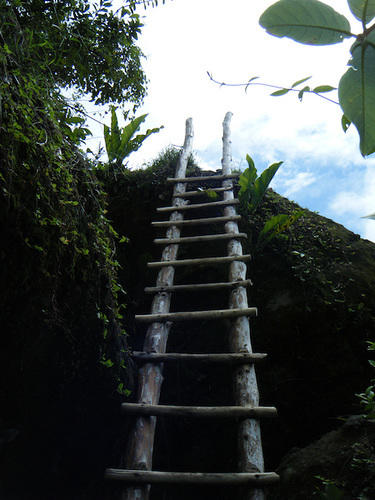
Photo by Carlos Ignacio Baez Hernandez
«Influencia en el idioma». Tamaña hipérbole. Pero veamos de reojo el río que arrastra nuestros días: el mercado y su oráculo doméstico, Google. Una de las editoriales más prestigiosas de poesía en español es Visor, que distribuye sus libros a ambos lados del Atlántico. En su catálogoencontramos a cinco de los nicaragüenses vivos: Cardenal y Belli, con 6 libros cada cual, y Francisco de Asís Fernández (1945), Daisy Zamora (1950) y Carlos Fonseca Grigsby (1988), con uno cada uno; aunque si nos asomamos a las webs de algunas de las librerías más icónicas de México —uno de los países que más importan libros desde España, hogar de Visor—, solamente encontramos a Cardenal y Belli en todas ellas (El Sótano, Gandhi, Péndulo, Porrúa), mientras que Zamora, con ese libro (La violenta espuma, 2017), únicamente está en Gandhi y Péndulo; Fernández, con títulos de otras editoriales (mexicana, La Otra: Luna mojada, 2015, y española, Alfar: La traición de los sueños, 2015, en PDF) está solo en El Sótano; Fonseca Grigsby, por su lado, no está, con su único libro publicado hasta ahora (Una oscuridad brillando en la claridad que la claridad no logra comprender, 2008), ni en la biblioteca nacional.
Y si escribimos «poeta nicaragüense» en el celebérrimo buscador, es probable que el algoritmo nos devuelva, encabezando los resultados, un panel con fotografías y nombres (tipo cromos coleccionables) que incluirá entre los primeros a Cardenal y Belli, junto con otros ya físicamente desaparecidos como Rubén Darío (1867-1916) o Claribel Alegría (1924-2018), Pablo Antonio Cuadra (1912-2002) o Carlos Martínez Rivas (1924-1998). No podremos, además, dejar de notar seguramente un rostro asociado hoy menos con las letras que con aquello que, decían antaño, las hace entrar: el de la actual vicepresidenta de Nicaragua, Rosario Murillo (1951), de quien no encontraremos ningún libro en librería alguna, a no ser de viejo: dejó de publicar poesía en 1990, cuando se dice que mandó destruir el tiraje completo de Como los ángeles —si bien durante la campaña electoral de su marido que dirigió con éxito, en 2005-2006, colgó casi todos sus poemarios, inéditos incluidos, en un sitio web proselitista—.
Tal vez nos tentaría, llegados a este punto, la idea de establecer alguna relación entre la media docena de poetas nicaragüenses vivos antes nombrados. Más que estéticamente, aunque también —pudiendo de algún modo salvar a Fonseca Grigsby—, se vinculan todos ellos —y aquí sí claramente salvo el último— por haber combatido al poder (político) nicaragüense y haberlo tomado luego o compartido colegiadamente, unos más, otros poco menos. Esta simbiosis Literatura/Poder, Política/Estética, será como la c en la conocidísima fórmula de Einstein que resume la obsolescencia de referentes absolutos durante la era en que —todavía hoy— pervivimos, y que asimismo evidencia cómo la masa puede transformarse en Energía. La constante, pues, en el sistema que más o menos, disculpando simpleza o simplificación, representan nuestros —todavía hoy— protagonistas. Sistema que antes de su asalto colectivo funcionaba, desde lo literario, más o menos igual, pero con un matiz algo significativo: para los poetas hegemónicos predecesores, entre quienes es fácil colocar al ya referido Cuadra junto con quien por mucho tiempo fue considerado maestro antonomástico entre los letrados nicaragüenses, José Coronel Urtecho (1906-1994), no era necesario tomar el poder si podían ejercer lo que llaman el soft power, y su invariante era entonces algo más como Literatura/Nación (o quizá Nación/Literatura) y aprendieron a convivir con la política (y operar en ella) de una forma —digamos— subrepticia, como quien no quisiera la cosa.
Y la cosa, justamente, la cosa pública: la república o su posibilidad —además de comprobables consanguinidades—, es lo que, por intentar influenciar o conducir el destino del país, ha mantenido estrechamente vinculados a los poetas nicaragüenses durante casi un siglo: «El Siglo de la Poesía en Nicaragua», como propone otro miembro de la estirpe, Julio Valle-Castillo (1952), que así titula su antología-enciclopedia (tres volúmenes: unas dos mil páginas) de lo que se ha dado en llamar poesía nicaragüense, cuya definición propuesta por Coronel Urtecho y Cuadra —quienes inventaron, digamos, el constructo— es ligeramente ampliada en cuanto a sus orígenes, recuperando para su historia a los modernistas, a quienes coloca en los orígenes de este «fenómeno, tan individual como colectivo, excepcional en la lengua común de España y América», con lo que disminuye la carga que para aquellos debía ser llevada por Darío: la fundación de la literatura nacional (léase poesía nicaragüense), y con ella —y he aquí uno de los mitos modernos o modernizantes más arraigados, cortesía del XX y sus poetas—, la fundación de la nación («Nicaragua: tierra de poetas», etcétera).
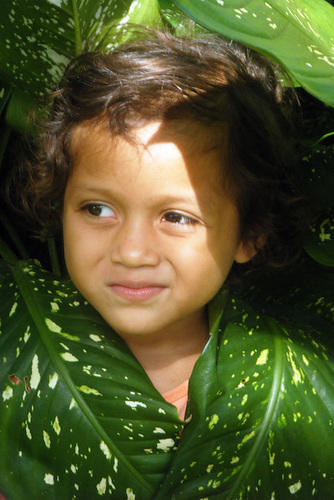
Photo by Jader Jose Hernandez Jimenez
Porque la Historia, incluso de la Literatura, se apura a recordarnos en su «canon abierto» de la «última poesía en español» Remedios Sánchez García, «la escriben siempre los vencedores». Y, añade: «también hay vencedores y vencidos en poesía». Su trabajo, publicado por Visor en 2015 y elaborado bajo una inquietante idea democratizadora de la antigua autoridad a partir de la cual doscientos investigadores de un centenar de universidades del ámbito occidental literalmente votaron para elegir a «los poetas más relevantes de la lengua española nacidos después de 1970», incluye una muestra de la obra de cuarenta autores nacionales de una catorcena de países entre los que solamente uno es nicaragüense: Francisco Ruiz Udiel (1977-2010).
El canon abierto, más allá de toda polémica, transparenta algunos de los mecanismos que llevan (o no) a un poeta a perdurar. La poesía, al fin, hecha ya poema, es un acto social o nada. Murillo, por ejemplo, vive quizá una de sus horas altas por aquello de que no existe publicidad mala; pero, aunque muestras de su obra aparezcan en casi todas las antologías referenciales de la poesía nicaragüense, es la única de los ya citados que Daniel Rodríguez Moya omite en La poesía del siglo XX en Nicaragua, que Visor publicó en 2010 en su colección La Estafeta del Viento América, donde, dos años después, Ángel Esteban y Ana Gallego Cuiñas antologarían, bajo el título Juego de manos, la «poesía hispanoamericana de mitad del siglo XX», que incluye a tres nicaragüenses: Cardenal, Belli y Martínez Rivas.
Este último, cuyo vigésimo aniversario luctuoso pasó desapercibido en junio de 2018 seguramente por la situación hipercrítica de Nicaragua (con Murillo justamente de coprotagonista, Belli como actriz de un reparto acostumbrado a los primeros planos y Cardenal haciendo puntuales cameos), es un consolidado poeta canónico de la tradición nicaragüense, aunque su obra circule relativamente mal. Falta ver si otros, fallecidos más recientemente, como Vidaluz Meneses (1944-2016) o Edwin Yllescas Salinas (1941-2016), Carlos Rigby (1945-2017) o Ana Ilce Gómez (1944-2017), gozarán de igual salud al paso de los años.
Si vemos los libros de texto de Lengua y Literatura editados por el Ministerio de Educación de Nicaragua para las escuelas públicas, notaremos la recurrencia de poetas como Darío, Cuadra o Coronel Urtecho, junto con otros como Azarías H. Pallais (1884-1954), Joaquín Pasos (1914-1947) o Salomón de la Selva (1893-1959), y es apenas en el libro del último grado donde leemos un poema de La insurrección solitaria, libro icónico de Martínez Rivas publicado en 1953, junto con otro de Cardenal y uno más de Belli. Aparte de estos dos, y una poeta mucho más joven, Andira Watson (1977), cuyo nombre se cambia por «Indira» y que aparece con un breve poema citado de pasada en el libro de octavo grado, ningún otro poeta vivo está en las páginas de instrucción pública, aunque debemos señalar que Gómez no había fallecido cuando su poema «Ángel de expulsión» fue incluido junto con el de Belli, «Y Dios me hizo mujer», en la unidad sobre «voces femeninas».
Y es que, a falta de industria editorial, un sistema de certámenes literarios consolidado, e incluso recepción académica o casi cualquier otro tipo de crítica de los pocos poemarios publicados anualmente en Nicaragua (en 2016, último año del que se disponen datos, se registraron 153 títulos, en todas las materias, ante la agencia ISBN), han surgido modos alternativos de construcción del canon poético —que debe reactualizarse constantemente— y de incorporación de nuevos autores al campo literario. A principios de siglo todavía circulaban cada sábado sendos suplementos consagrados a las letras con los dos diarios más grandes: La Prensa Literaria, fundado por Cuadra y cuya edición asumió luego —mientras duró— Marta Leonor González (1973), y El Nuevo Amanecer Cultural, dirigido primero por Luis Rocha Urtecho (1942) y luego —mientras duró— por Erick Aguirre Aragón (1961), ambos miembros de número (con Fernández y Valle-Castillo) de la Academia Nicaragüense de la Lengua, que Cuadra dirigió.
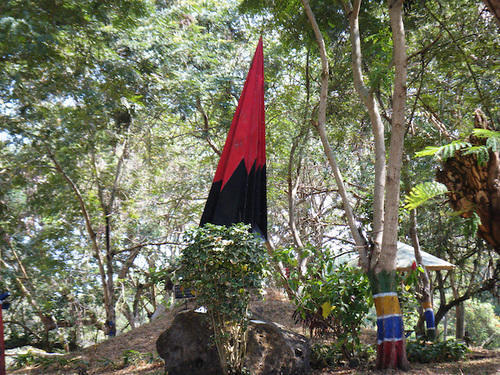
Photo by Stephanny Rachell Carbonero Rosales
Hoy los espacios de circulación de poesía, además del libro (con la desventaja de que cada vez menos editoriales locales publican poesía y la mayoría cobran el «servicio» a los autores), se limitan a un par de revistas impresas de escasa circulación (quizá la única con un alcance relativamente amplio sea El hilo azul, fundada en 2010 y dirigida por Sergio Ramírez [1942], con Ruiz Udiel como su primer jefe de redacción) o virtuales (las más destacables serían 400 Elefantes, que administran González y Juan Sobalvarro (1966) desde 1997 luego de tres años publicándola impresa; Carátula, que dirige desde 2004 el mismo Ramírez y editó también Ruiz Udiel; Álastor, dirigida por Berman Bans [1976] y fundada en Managua en 2016 con Víctor Ruiz [1982] y Yader Velásquez [1992], o Ágrafos, fundada en Washington, D.C. por Roberto Carlos Pérez [1976] y Mario Ramos [1977] en 2017). Luego quedarían blogs y redes sociales, cuyo alcance y nivel de validación es difícil de medir, pero que representan posibilidades interesantes de socialización directa.
Desde 2005 se realizaba también el Festival Internacional de Poesía de Granada, dirigido por Fernández y que organizaba cada año lecturas públicas de poetas de varias nacionalidades y lenguas, espacio de no poca importancia para el tráfico de ideas y contactos (la edición de 2016, por ejemplo, dedicada a Ernesto Mejía Sánchez [1923-1985], propició, por el encuentro casi fortuito entre Juana de los Ángeles Mejía, hija del poeta, y Marco Antonio Campos, la edición de Recolección a mediodía por parte de la Universidad Nacional Autónoma de México); pero, debido a la situación en Nicaragua, este 2019 no se realizó y habrá que ver si se reactiva cuando (¡¿cuándo?!) el país resuelva sus problemas políticos.
Hay una tradición poética y un modo de entender la poesía —su función, sus límites, su lenguaje— encarnados en patriarcas como Cardenal y que se han mantenido más o menos intactos desde los días hegemónicos de Cuadra y Coronel Urtecho. Un posible agotamiento del modelo, sin embargo, puede intuirse en, por ejemplo, la falta de reactualización del canon, tradicionalmente ejecutada, en parte, con antologías editadas por poetas nicaragüenses a medida que se integran al campo literario —el más reciente fue Héctor Avellán (1973), que en 2012 compiló Nicaragua: el más alto canto, partiendo de Darío y acabando en Fonseca Grigsby—, o en la distancia que la mayoría de quienes tienen cuarenta años o menos (nacidos a partir de 1979) han mantenido, al menos hasta ahora, hacia la acción política directa, los activismos sociales o la burocracia estatal. Pero es en los textos donde hay que buscar las perturbaciones. Algunos poemas de estos autores novoseculares, que pudieron haber sido bisnietos o tataranietos del más vivo de los poetas nicaragüenses vivos, pueden leerse en una reciente muestra compilada por quien tras el siguiente punto le dirá a usted, persona atenta, cambio y fuera.
Spring/Summer 2019, Volume XVIII, Number 3
Carlos M-Castro is an author and editor who teaches Spanish as a second language in Bakú, Azerbaijan, where he temporarily has resided since 2016. His website is lectordislexico.net.
Carlos M-Castro es un autor y editor que enseña español como lengua extranjera en Bakú, Azerbaiyán, donde temporalmente reside desde 2016. Su sitio web es lectordislexico.net.
Related Articles
Accompanying a Search for Self-Determination
English + Español
The small indigenous Mayagna community of Awas Tingni in the interior forest of Nicaragua’s Caribbean Coast made legal history in the 1990s when they faced an incursion by an international lumber company. The community mapped its land claims and brought a case…
The Afterlife of Rubén Darío in English
English + Español
Argentine writer Enrique Anderson Imbert (1910–2000)—who, incidentally, in 1965 became the first Victor S. Thomas Professor of Hispanic Literature at Harvard—once wrote that the Nicaraguan poet Rubén Darío divides the history of Spanish-language literature in…
Ambivalent Memories
English + Español
On July 20, 1979, the dawn after the triumph of the Sandinista Revolution, I had the good fortune to arrive in Managua as an assistant for a Dutch TV crew. As for anyone who lived through those days, the experience overwhelmed my senses—the palpable collective joy tempered…

